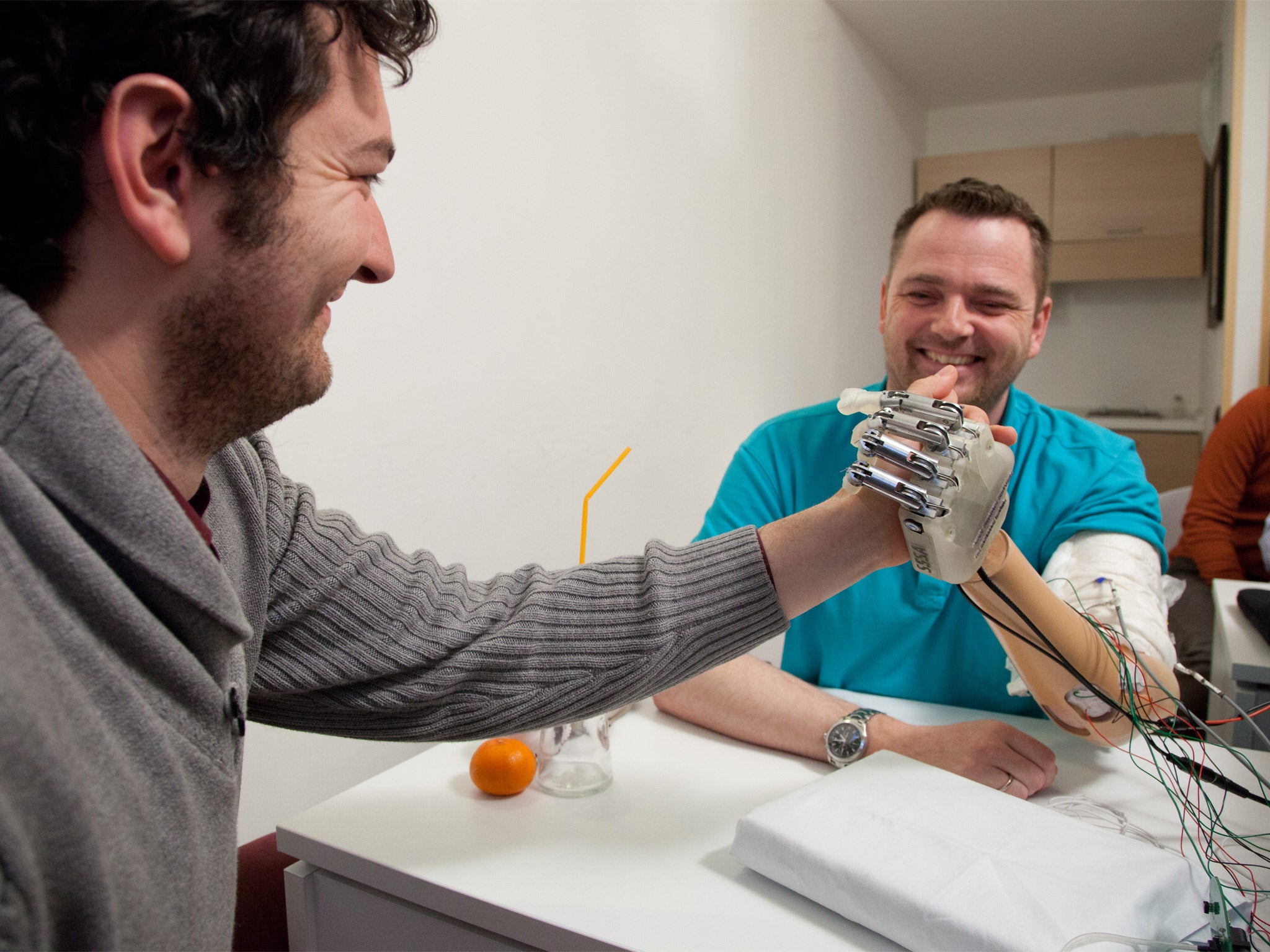A clever touch: Introducing the 'bionic hand' that allows amputees to feel objects

A prosthetic hand with touch-sensitive fingers has allowed a man to feel objects in his grasp for the first time since he lost his real hand in an accident nearly 10 years ago, scientists said today.
The amputee was fitted with the “bionic hand” for a month last year, during which time he was able to distinguish between different objects that he held in his grip while blindfolded, the researchers said.
It is the first prosthetic hand that has been able to send sensory information to the wearer’s brain via electrodes implanted beneath the skin. Its invention could lead to a new generation of bionic limbs that can provide real-time, tactile information about the surrounding environment.
“This is the first time in neuroprosthetics that sensory feedback has been restored and used by an amputee in real-time to control an artificial limb,” said Professor Silvestro Micera of the Ecole Polytechnique Federale de Lausanne in Switzerland.
“The possibility of restoring close to the natural sensation was amazing and so surprising. After 30 days we were obliged by regulations to remove the hand from the patient, which was a pity because everything was working so well,” Professor Micera said.
“The idea is that the next implant will be ready within two years and we aim to put the electrodes into the arm for the long term, perhaps months or years, and for everything to be completely portable,” Professor Micera said.
Dennis Aabo Sorensen, a 36-year-old Danish man who had his left hand surgically amputated following an accident with fireworks in 2004, told The Independent that the prosthetic limb had enabled him to feel objects for the first time since he lost his real hand.
“Of course it was amazing to have the kind of feeling that was so close to my normal hand after so many years. It’s not exactly 100 per cent natural like a normal hand, but it was a close-enough step towards that,” Mr Sorensen said.
“The sensory feedback was incredible. I could feel things that I hadn’t been able to feel in over nine years. When I held an object, I could feel if it was soft or hard, round or square,” he said.
The hand works by sending information about the strength and shape of the grip around an object to a computer chip that re-packages the data into a format that is more readily understood by the body’s peripheral nervous system.
Four small, ultrathin electrodes implanted into the ulnar and median nerves of Mr Sorensen’s left arm transmitted these sensory signals to the peripheral nervous system, which communicated a rudimentary sense of touch to the spinal cord and brain. Mr Sorensen controls the hands movement by contracting muscles in his lower arm, rather like gripping the brakes of a motorcycle, he said.
The study, published in the journal Science Translational Medicine, demonstrated that it was still possible to transmit the information to the nervous system despite the formation of any scar tissue following the hand’s amputation.
“We were worried about reduced sensitivity in Dennis’ nerves since they hadn’t been used in over nine years,” said Stanisa Raspopovic of the Scuola Superiore Sant’Anna in Pisa, and the lead author of the study.
Mr Sorensen underwent surgery to fit the prosthetic hand in January 2013 but had it removed again the following February following 19 days of preliminary tests and a week of further testing when he was connected to electrodes and asked to judge objects while wearing a blindfold and headphones to eliminate the possibility of visual or auditory cues.
Alastair Ritchie, a lecturer in bioengineering at the University of Nottingham, said: “This technology would enable the user to know how firmly they are gripping an object, which is vital for handling fragile objects – imagine picking up an egg without any feeling in your fingers?
“Another exciting aspect is the ability of the human brain to learn, allowing the user to become more proficient as he gains experience in using the prosthesis,” Dr Ritchie said.
Join our commenting forum
Join thought-provoking conversations, follow other Independent readers and see their replies
Comments
Bookmark popover
Removed from bookmarks